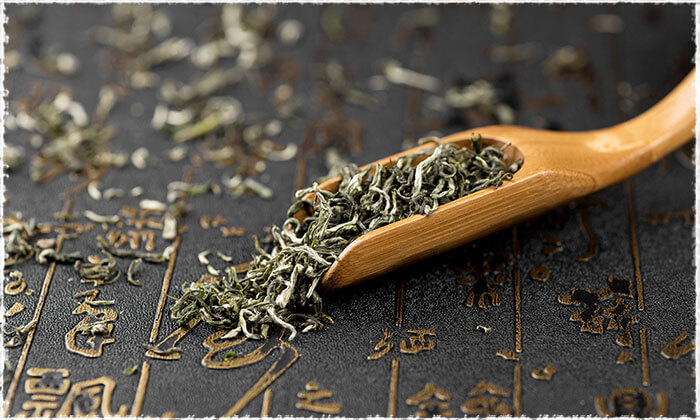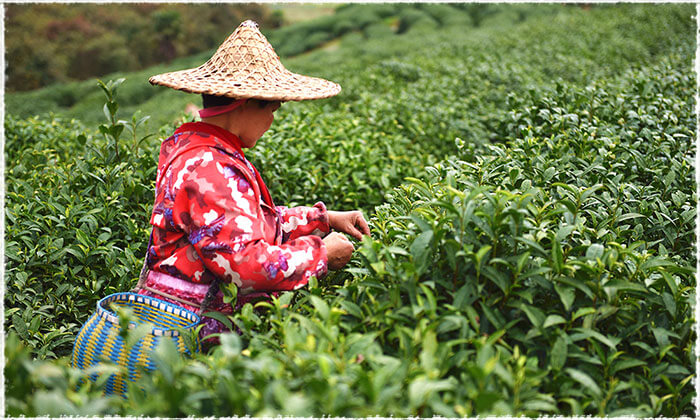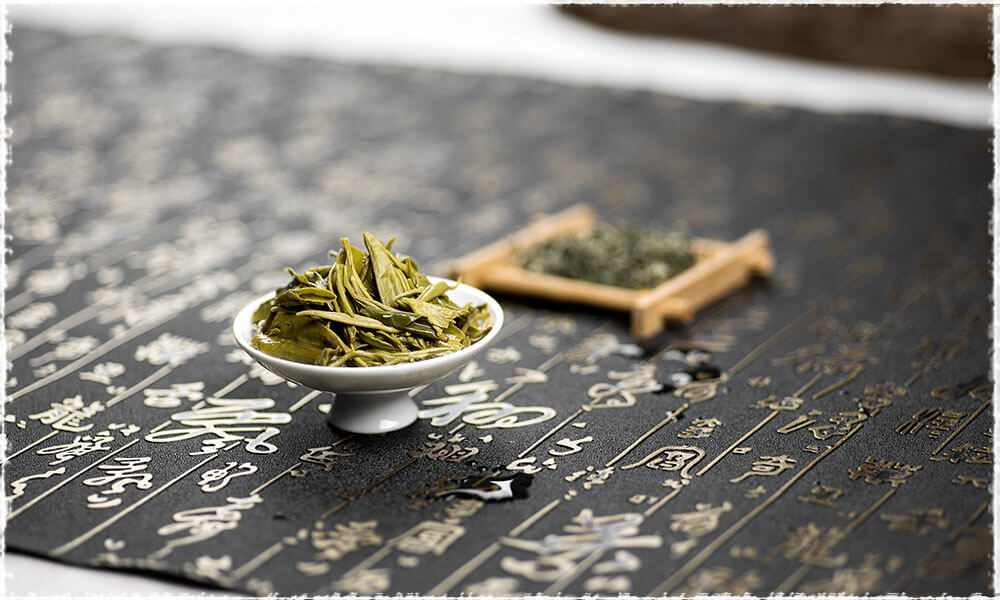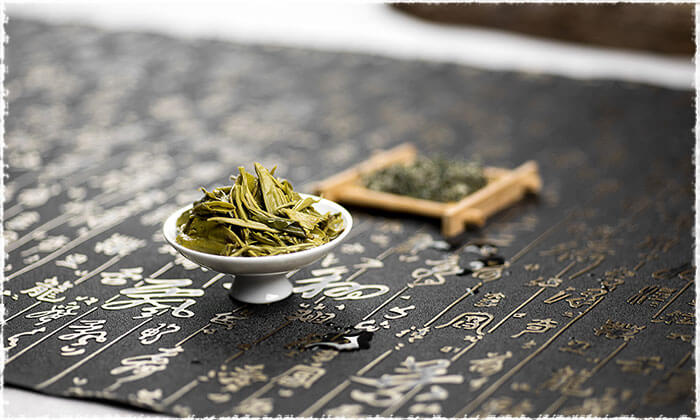What is Bi Luo Chun?
Bi Luo Chun is not only one of the top ten famous teas of China, but also the treasure among those famous teas. Bi Luo Chun is famous all around the world for its beautiful appearance, bright color, deep aroma and mellow taste. Bi Luo Chun Green Tea has a long history, and in Ming dynasty it is originally called “Xia Sha Ren Xiang”.


According to legend, during the Qing dynasty, the Emperor Kangxi made his southern rounds to Taihu Lake and occasionally tasted a tea named “Xia Sha Ren Xiang (吓煞人香)” and loved it. He thought the name was not elegant so Emperor Kangxi gave it a new name “Bi Luo Chun”. From then on, Bi Luo Chun was known as a royal tea and became famous. One of the typical features of Bi Luo Chun Green Tea is that tea trees and fruit trees grow together. The teas absorb the fruit aroma and fragrance of flower. In this way the natural quality of Bi Luo Chun’s flowery aroma is produced.
The Processing of Bi Luo Chun
The picking of Bi Luo Chun has three characteristics: first, pick early; second, buds are tender; third, leaves are clean. It is picked at the start of spring, and stopped after Grain Rain. Usually the tea picked in one bud with one or two leaves and the “Ming Qian Tea” picked from before Qing Ming have the best quality.
The fresh leaves must be carefully selected. Remove unnecessary leaves, tough leaves and overlong stems to keep the tea even and tidy. It was also asked for picking and frying on the same day. The process of making this tea has four steps: fry-fixation, rolling, shaping and baking. When frying, the worker’s hands should keep on the tea, and tea should not be out of the pan. With the combination of this continuous operation, the tea is made.


Fixation: is processed in a big iron pan. The temperature of the pan can reach to 190-200 ℃, when leaves are fried in the pan with bare hands. This step requires every piece of leaf must be fried evenly, with no red stems and burns on the leaves. It will last about 3-5 minutes.
Rolling: under the temperature about 70 to 75℃, alternately shake, fry and roll the leaves. With the decrease of the water in leaves, the stripe shape is gradually formed. When rolling, if the leaves are compressed too much, the tea will be over-fried, have scorched flavor and dark color, making the leaves brittle. On the other hand, if there is no enough pressure on the leaves, it is not good for shaping. 10 minutes later, when about 60% to 70% of water in the tea is removed, reduce the pan’s temperature and go into next process. This whole process lasts about 12 to 15 minutes.
Shaping (rubbing into curls until pekoes appear): this is the key for forming the curling snail shape and revealing the white pekoes. When the pan temperature reaches 50 to 60 ℃, then use two hands to keep frying and rubbing all the tea leaves into many small balls,then shake the ball and loosen the leaves. Repeat the process time after time till the leaves reached to 80% dry. By then the leaves are rubbed into stripe and curls, and the pekoes fully appeared. This step lasts about 13 to 15 minutes.
Baking: keep rolling and frying more gently to achieve the goal of making a fixed shape, continuing revealing pekoes and steaming water out. When the tea is about 90% drying, take out from the pan and lay the teas on a piece of mulberry paper then put the teas with the paper on gentle fire to bake the leaves till they are completely dried. It will last 6 to 8 minutes. The temperature of pan is about 30 to 40℃. Only about 7% of water is left in the finished leaves. The whole process will last about 40 minutes.
Five Grades of Bi Luo Chun
According to the national standards for tea of China, Dongting Bi Luo Chun Green Tea can be classified into five grades: premium grade A, premium grade B, grade A, grade B and grade C. The temperature of the pan, the amount of tea leaves and the level of stress will increase with the tea’s grade decreasing. That’s to say, lower grade Bi Luo Chun is made with higher temperature, heavier stress and bigger amount of tea leaves.


The dry tea of Dongting Bi Luo Chun is very slender, curly like a snail and full of pekoes. Dry tea presents green jade color, hidden behind the silver pekoe. The fragrance is very strong. The taste is fresh, sweet and mellow. The liquid is green and bright. The leaves after steeping is tender green and bright. First steep is light, carries gentle flowery flavor and fresh. The second steep is in green jade color, fragrant and mellow. The third steep is bright blue, has strong flavor and sweet aftertaste. Sipping the floral and fruity aroma of the Bi Luo Chun, it makes you refresh as if you were standing in the tea gardens on the mountains in Dongting.
 Exploring the Charms of 2024 Spring Tea Garden with Angel
Exploring the Charms of 2024 Spring Tea Garden with Angel Yingde Black Tea
Yingde Black Tea Matcha vs. Green Tea Powder
Matcha vs. Green Tea Powder
